-
0 Comments
How Smart Infrastructure Reduced Water Loss by 40%

Water is one of our most vital natural resources — essential for public health, agriculture, industry, and ecosystems. Yet, despite its value, an alarming amount of treated water never reaches its intended destination. Globally, water utilities lose an average of 30% of their supply due to leakage, theft, or poor infrastructure. In some regions, the figure climbs even higher.
But new developments in smart infrastructure are turning the tide. By integrating digital technology into water systems — from smart meters to predictive analytics — cities and utilities are achieving up to 40% reductions in water loss, all while improving operational efficiency, lowering costs, and contributing to long-term sustainability goals.
The Scale of the Problem
Water loss in distribution systems, often referred to as non-revenue water (NRW), poses serious economic and environmental risks. NRW includes:
Physical losses from leaks, burst pipes, and overflows.
Commercial losses from inaccurate metering or unauthorized consumption.
Apparent losses due to data errors or unbilled consumption.
For municipalities, high levels of NRW translate to lost revenue, wasted energy used in water treatment and pumping, and increased stress on existing water sources. Repairing these issues manually is time-consuming, expensive, and often reactive — not proactive.
What Is Smart Water Infrastructure?
Smart water infrastructure refers to a network of connected devices and systems that provide real-time monitoring, automated control, and data-driven insights into the performance of a water distribution system. It typically includes:
IoT Sensors to monitor flow rate, pressure, temperature, and water quality.
Smart meters that provide detailed, time-stamped usage data for every connection.
Data analytics platforms that aggregate and analyze data to identify inefficiencies and anomalies.
Automated control systems that can respond to system conditions without manual intervention.
When integrated properly, these components create a “digital twin” of the water network — a dynamic, real-time model that helps utilities detect problems early, manage demand more effectively, and optimize operations across the board.
How Smart Infrastructure Reduces Water Loss?
Real-Time Monitoring
Real-time data is the backbone of smart infrastructure. With sensors placed strategically throughout the water system, utilities gain constant visibility into:
Water pressure fluctuations
Sudden drops in flow
Pipeline temperature anomalies
Usage trends at individual and district levels
This continuous stream of information allows for immediate detection of leaks, rather than relying on periodic manual checks or waiting for visible signs of failure.
For example, a drop in pressure in one part of the system could indicate a leak. When flagged in real time, maintenance teams can investigate the issue within hours — instead of discovering it weeks later when the utility bill spikes or the road collapses.
Predictive Analytics
Beyond real-time detection, predictive analytics uses machine learning algorithms to forecast where and when issues are likely to occur. These algorithms analyze:
Historical leak patterns
Pipe age and material
Environmental conditions (e.g., soil type, temperature, seismic activity)
System stress levels
This approach allows utilities to shift from a reactive “fix-it-when-it-breaks” model to a proactive “maintain-it-before-it-fails” strategy — drastically reducing the number and severity of leaks.
Smart Maintenance
With better insights into infrastructure health, utilities can prioritize repairs based on risk and impact rather than following arbitrary maintenance schedules. For example:
Replacing a high-risk pipe before it bursts
Reinforcing zones with frequent leaks
Automating valve controls during peak demand
This kind of condition-based asset management not only extends the lifespan of infrastructure but also optimizes the use of limited budgets and resources.
A Smarter Future for Water Management
Water is too valuable to waste. In an era defined by climate uncertainty and population growth, smart water infrastructure offers a clear path toward a more efficient, sustainable, and resilient future. The ability to monitor systems in real time, predict failures before they happen, and optimize maintenance efforts is not just a technological upgrade — it’s a strategic shift in how we manage one of Earth’s most critical resources.
By embracing these innovations, utilities can reduce water loss by up to 40% — and take a giant step toward sustainable water stewardship.
Want to learn more about smart water technologies or see how they can work for your city or utility?
